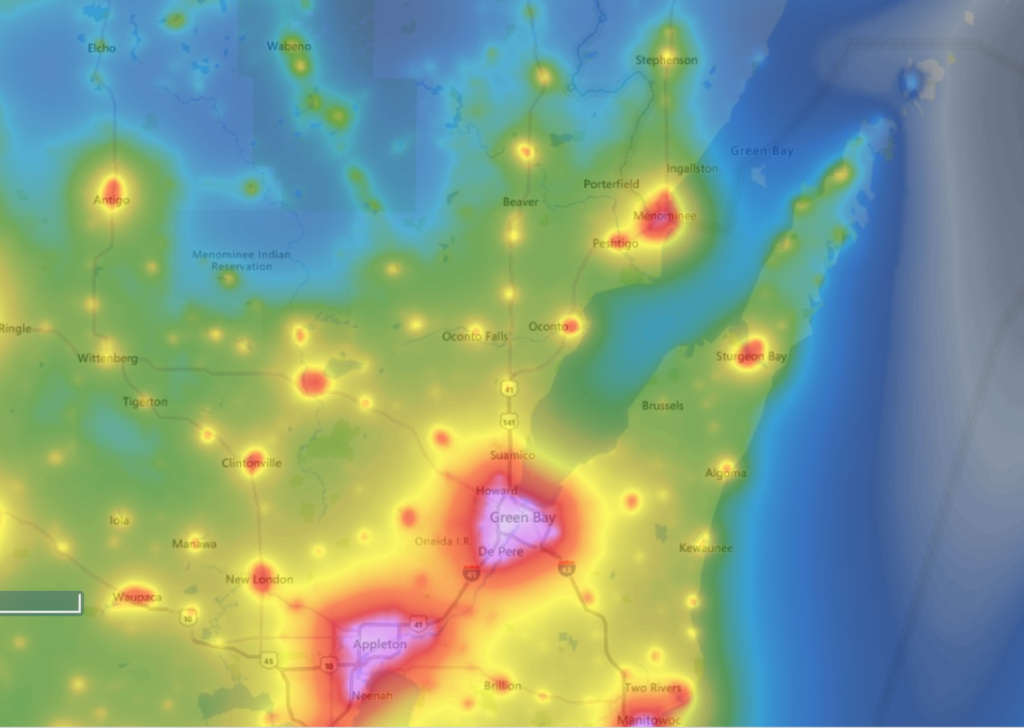As the sun sets and darkness envelops the landscape, a vibrant tapestry of stars emerges overhead, whispering secrets of the cosmos. Yet, for many urban dwellers, the experience of stargazing has become a rare indulgence, obstructed by the ever-looming specter of light pollution. Could it be that in our pursuit of progress and modernity, we have inadvertently traded the celestial wonders for artificial luminescence? This pivotal question reverberates among the ranks of astronomers, environmentalists, and concerned citizens seeking to reclaim the night.
Light pollution, defined as the excessive or misdirected artificial light that obscures the natural night sky, has become a pervasive phenomenon in contemporary society. The sources of this pollution are manifold: streetlights, neon signs, illuminated advertisements, and residential lighting collectively contribute to this blight. With over 80% of the global population living under light-polluted skies, a direct consequence arises: a diminishing ability to engage with the celestial environment. This alteration in our nightscape not only hinders astronomical observations but also disrupts ecological systems and human circadian rhythms.
Among the fields profoundly affected by this encroachment is astronomy. Astronomers rely on comprehensive and unobstructed views of the universe to conduct research, make discoveries, and engage in the education of future scientists. The advent of advanced telescopes capable of surveying the cosmos has been instrumental in propelling the field forward. Nevertheless, artificial lighting diminishes their efficacy. For instance, the bright glow of urban areas negates the ability to discern fainter celestial bodies, which are pivotal for studying the dynamics of galaxies and the morphology of cosmic structures.
In response to this challenge, astronomers are not merely sitting idle; they are actively advocating for the preservation of dark skies. Various organizations are emerging worldwide, mounting a resistance against light pollution through a combination of public awareness campaigns, legislative efforts, and innovative solutions. One pivotal strategy involves the implementation of “dark sky initiatives,” which designate entire regions as areas where artificial lighting is minimized. These designated areas not only offer a haven for astronomers but also promote tourism, attracting visitors who seek to experience the beauty of an unblemished night sky.
Yet, while these initiatives are laudable, they often stumble upon formidable obstacles presented by socio-economic factors. In urban centers, where light contributes to safety and commerce, the idea of reducing illumination can be met with skepticism. The potential challenge lies in finding a balance: how do we safeguard public safety and promote urban aesthetics while also minimizing light pollution? This perplexing query suggests the necessity for interdisciplinary dialogue, engaging urban planners, public safety officials, and environmentalists in collaborative solution-finding.
Moreover, innovative technology plays a crucial role in addressing these challenges. Advances in lighting design—such as the development of LED streetlights with adaptive lighting capabilities—offer promise. These systems can be programmed to dim or change intensity based on real-time needs, striking a harmonious balance between public safety and minimizing light spill. Additionally, the use of shielding techniques in outdoor lighting fixtures can redirect light downward, thereby preserving the integrity of the night sky while fulfilling necessary illumination requirements.
Education remains a vital component in the quest to combat light pollution and reclaim the night. Engaging local communities through educational programs can foster an appreciation for celestial phenomena, ultimately encouraging a collective ethos toward environmental responsibility. Schools, observatories, and community organizations can collaborate to host stargazing events and workshops, cultivating interest in astronomy and demonstrating the beauty of a star-filled sky.
In tandem with education, citizen science projects present an opportunity for individuals to participate actively in combating light pollution. Initiatives such as the Globe at Night program invite the public to measure and report observations of night sky brightness. By collecting this data, researchers can analyze light pollution trends and leverage the information to advocate for policy changes. When individuals take ownership of their contribution to the preservation of dark skies, a sense of agency emerges in the face of an otherwise overwhelming challenge.
As the struggle against light pollution unfolds, the implications extend beyond the field of astronomy. Ecological studies illuminate the adverse effects of artificial light on wildlife. Many nocturnal species, such as sea turtles and migratory birds, rely on natural light cues for navigation and behavioral patterns. Thus, the implications of light pollution reverberate through entire ecosystems, showcasing the necessity for broad-based solutions that harmonize human activity with the natural order. By recognizing that the night has been historically significant to human culture and biodiversity, society can shift towards more sustainable practices that honor this heritage.
The encroachment of light pollution poses a challenge that requires resolute action from scientists, policymakers, and the general public. The interplay between modernization and nature must lead to a critical reckoning: can society embrace the technological advancements of the modern age without sacrificing our connection to the universe? By implementing innovative solutions, promoting community engagement, and fostering interdisciplinary collaboration, the once-forgotten night sky may reclaim its rightful place in the hearts and minds of humanity. Ultimately, it is imperative to acknowledge that the darkness above holds the key to unlocking celestial wonders that have long eluded our gaze in the wake of relentless illumination.












